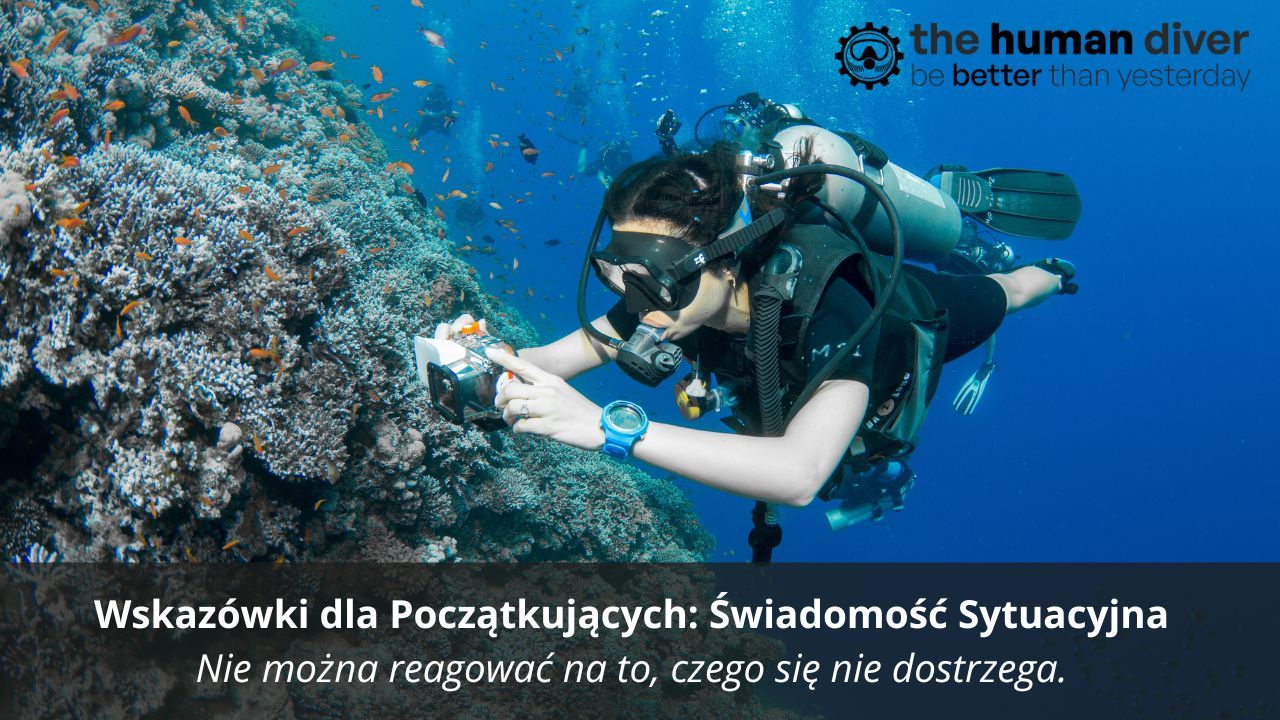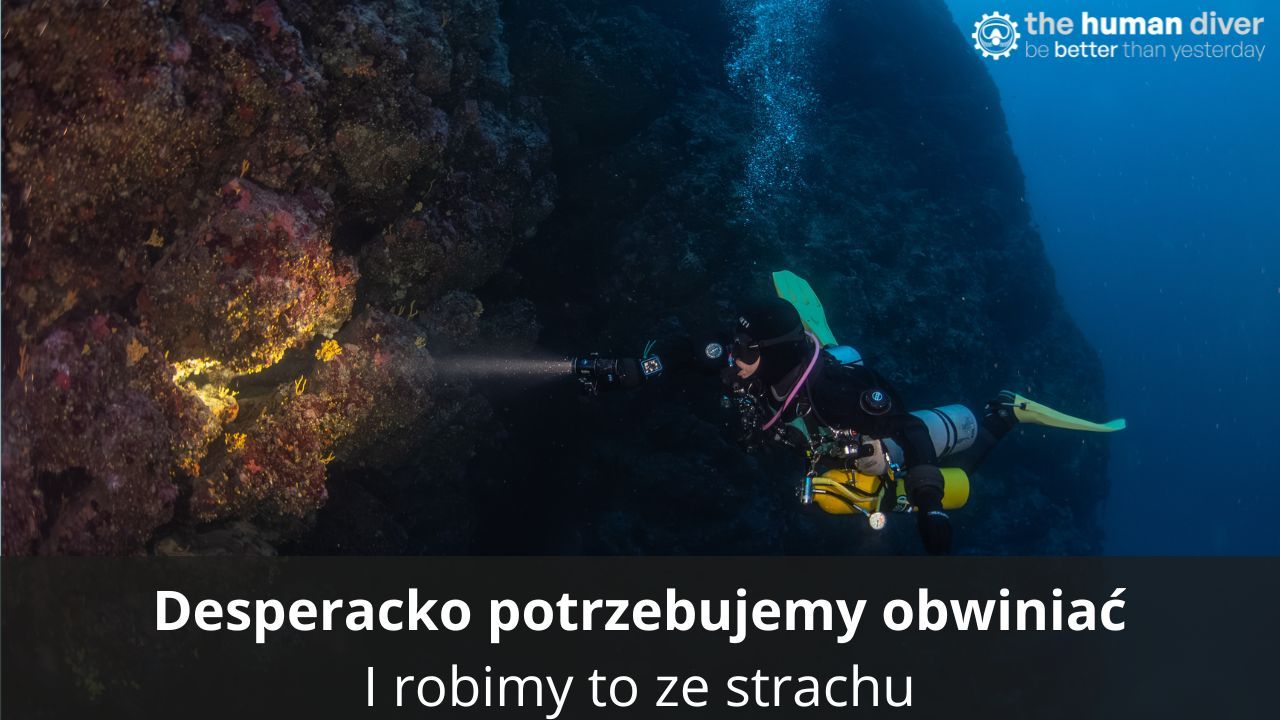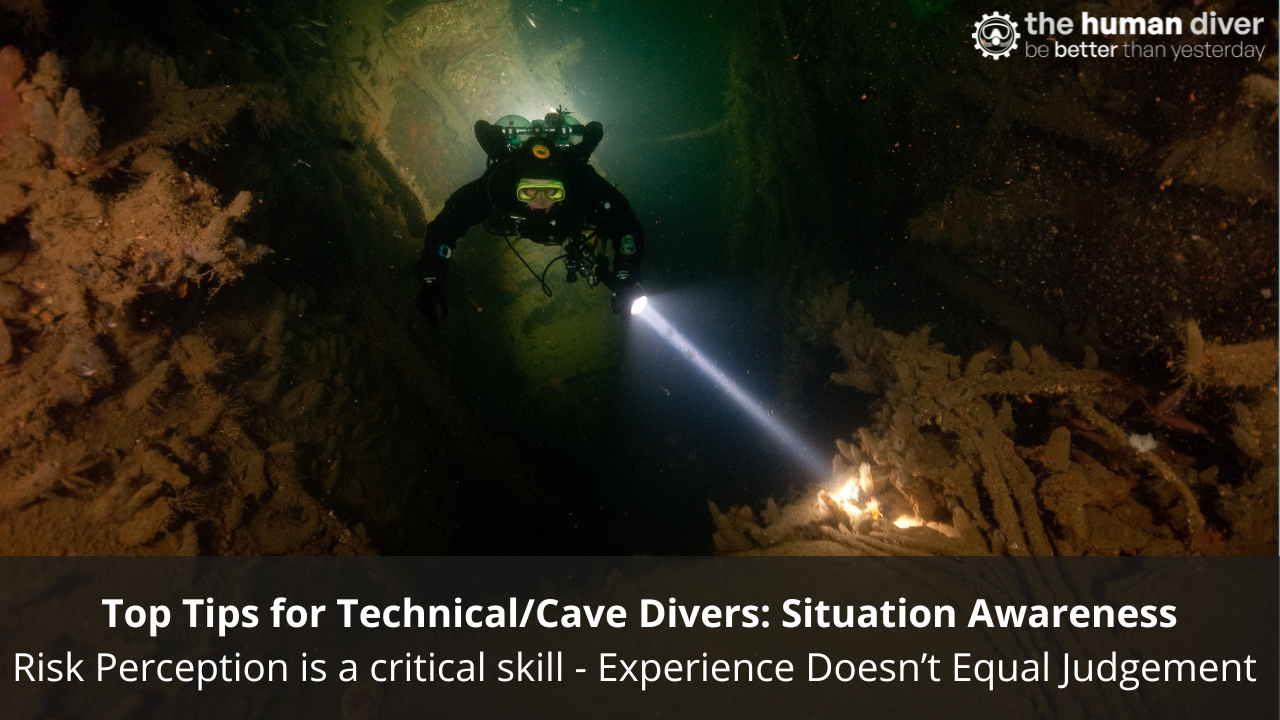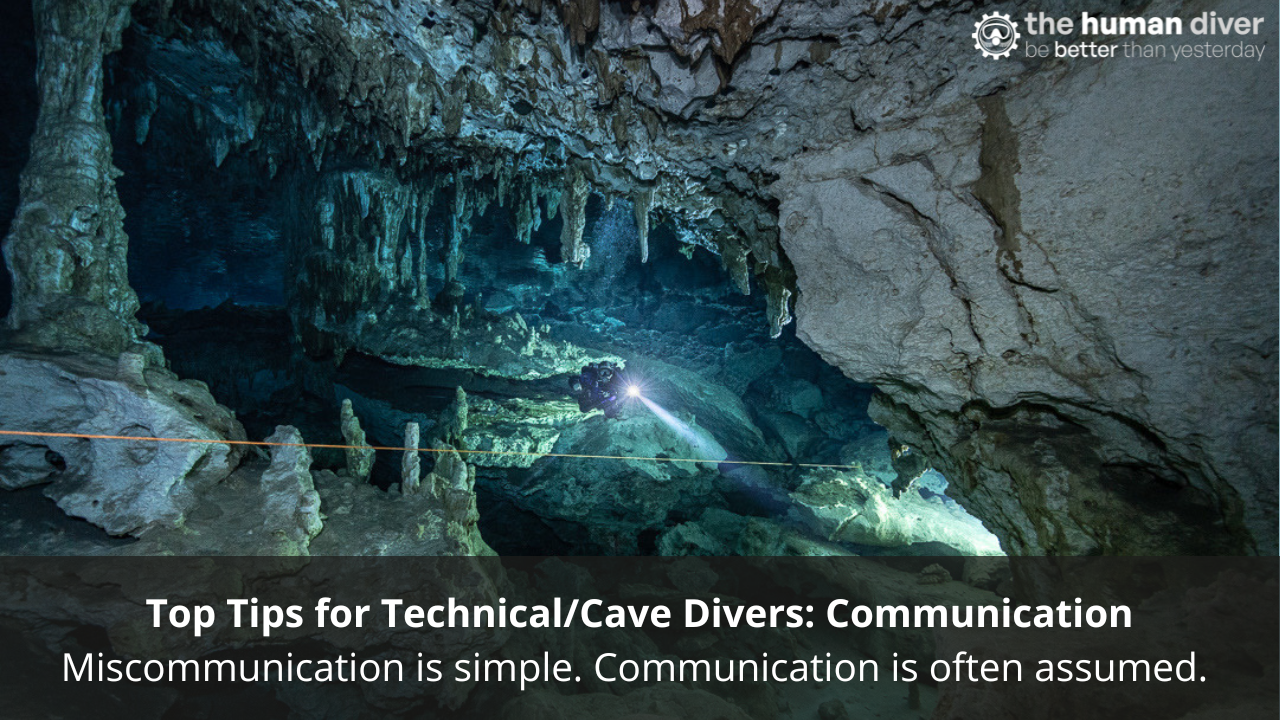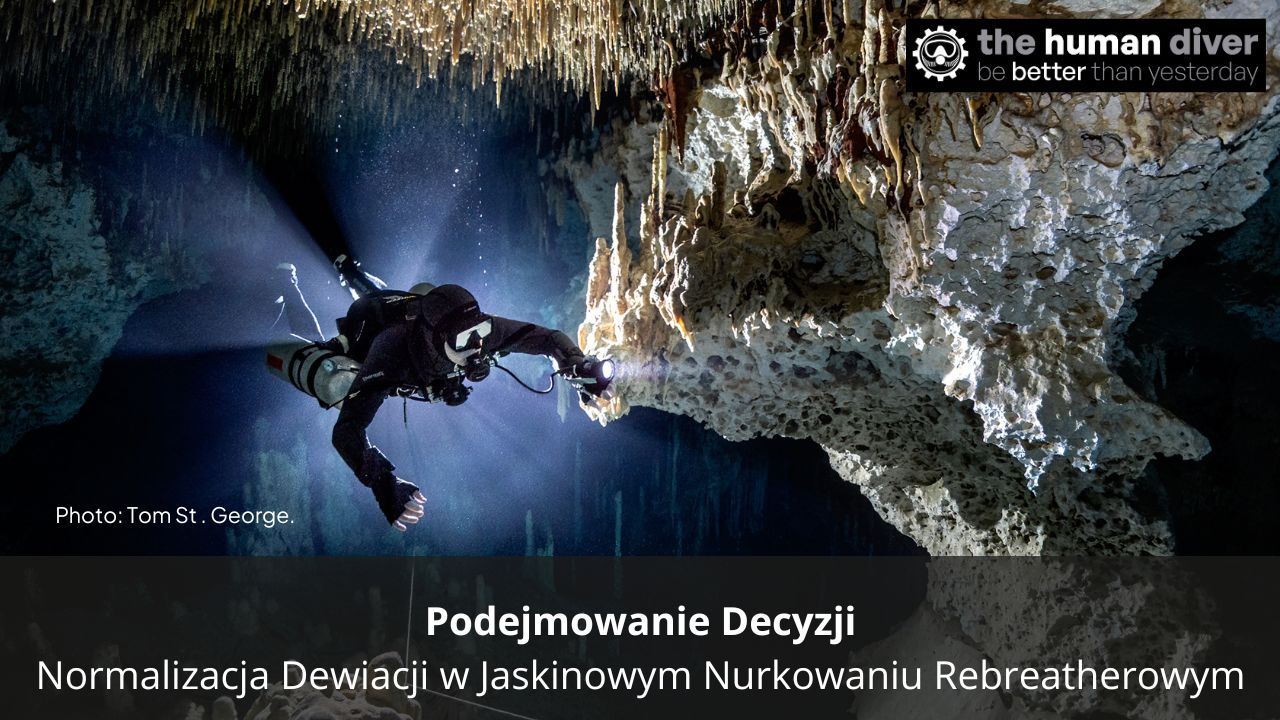
From an acorn to a two-day global virtual conference in four months!
Oct 05, 2021On 24-25 September 2021, the first-ever Human Factors in Diving Conference ran. There were 27 speakers from across the globe (NZ, Australia, Dubai, Europe, USA and Mexico) supported by the platform hosts (LexGo Live) who were operating across three different zones in the US and a media company recording and uploading to the platform in near-real-time based in Sydney! Just less than 25 hours of content was produced during the two 8-hr days, which will contribute to the learning about and application of human factors, non-technical skills, Just Culture and psychological safety in the sports, military, commercial and public safety diving sectors.
So how did it this start and what can you learn from this if you want to put something similar together?
The Idea

The genesis of the idea really started in July 2019 when I was running a two-day Human Factors in Diving face-to-face class in Edinburgh. There was a conversation between a few of the students including Tristan Cope, Robin Kirkpatrick, Laura Marroni and Cristian Pelligrini about putting together a one-day conference linked with one of the major conferences in the UK, like Eurotek or the Dive Show. Ideas were bounced around but nothing really happened, partly because in 2020 and 2021, there were no dive shows!
However, in January 2021, colleagues of mine working in the Veterinary Medicine domain (VetLed) organised the first HF in Veterinary Conference which brought together lots of different speakers covering how HF had been applied in Vet Medicine and what the vets could learn from the healthcare environment. At that time, I was in quarantine in NZ prior to starting a two-week task, and this reignited my thoughts on getting this going. Unfortunately, I was then really busy for the next two months and realised that I had missed the window for ‘pre-season’ in the UK and I would have to wait for another opportunity later in the year.
I am not sure what happened at the start of June but I decided that I was going to make this conference happen in 2021. I realised it was going to take about 3 months of lead-time to get people interested and get a date in people’s diaries. I was also conscious that it was still diving season in the UK.


So, I arranged a meeting with my marketing advisor, Ros Conkie (Ros Conkie Marketing, top/left), and Mickey Wilson (Firestarter Marketing, bottom/right) to work out a strategy. We brainstormed some ideas on what a delegate journey would look like, aiming for a public announcement on 28 June. This would give three clear months to market and sell tickets. It also gave me about 3 weeks to find a hosting platform and work out the costs for something I had never done before! How hard can it be?!
T – 3 months
This started with an intense few days of looking for vendors of virtual conference platforms. I wanted something which recreated the social interaction of a physical conference and I was reminded of a platform that had been recommended some 3 months prior called LexGo Live. Fundamentally, I didn’t want a Zoom-like experience which is one way, and all of the solutions I had seen, apart from LexGo, were like this. I didn’t need something that would scale to several thousand because I knew that many divers wouldn’t join, and the hosting of all of the recordings could be done via the Kajabi platform I already had for The Human Diver.
After some discussion with LexGo, I settled with them and we built an excellent relationship. They appeared to be more expensive than other solutions I had looked at, but they were going to be providing a fair amount of conference support along with event producers who would be backstage making sure that all appeared fine out front. If this had been built into the other options, I believe the costs would have all been pretty comparable.

The website was launched with live ($80), live plus recordings ($150) and VIP tickets ($250). The conference had two ‘main halls’ with 7 speaking slots in each plus a large stage for the opening and closing addresses, 30 presentations in total running from 10:00-18:00 UTC. Each slot was 50 mins long, 35-40 mins presentation, 10-15 mins Q&A and then 10 mins changeover. Each talk would start on the hour, making it easier to deal with multiple time zones. It was going to be intense!
The plan was for 300 tickets, with 50 of those for the speakers, media and training agencies so that they could see what the conference was. This would provide enough to cover the costs and then allow research and more course development to happen afterwards. It was also a number that LexGo could support as they are into personal relationships and not mass numbers when it comes to interactions!

My own (over) self-confidence had hoped that a large percentage of the tickets would be sold in the first few days as I had built up some significant interest on social media and had 350+ people pre-register. Only 50 sold on launch day and over the next couple of days… A bit of a disappointment to say the least…
I purposely didn’t ask for sponsorship because I had no idea what the ‘footfall’ would be like and while many organisations support what I do, very few have been able to provide monetary sponsorship.
Getting the speakers was the easy part as I have built up quite a global network, both inside and outside of the diving sector. I wanted to show the breadth and depth of application of human factors and how it could be applied to diving.
Costs at this stage were expected to be in the order of £25k covering the LexGo hosting platform and support, marketing (pre-, during and post-event), video production and editing.
T-1 Month
Between 28 June and the start of September, I worked with LexGo to refine what the conference would look like: how the halls and tables within would be arranged; how to provide opportunities for supporters to show their products and what options were available for making the speakers’ life easy. Bringing in professional event producers was an excellent idea as this allowed their expertise to be utilised in terms of the speaker and delegate interactions.
Ticket sales still weren’t great…but then sales tend to pick up close to the event. However, I was now getting responses to say that they were now busy that weekend...
Emails were sent to each of the speakers outlining requirements for presentation, recording and proceedings submissions.
T-2 Weeks
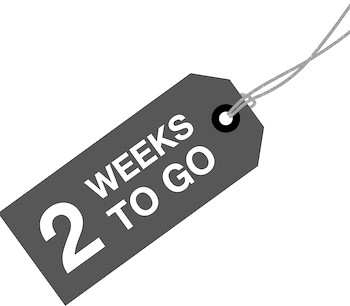
Things were now starting to get busy! As one of my maxims is to plan to fail safely, I had asked all of the speakers to get their presentations and video recordings of those presentations to me two weeks prior to the event. This would allow me to see what they were presenting, as my opening and closing addresses would be influenced by their content. It would also allow me to see if the content hit the mark as some of the speakers had never presented to an audience like this, or to the diving community. I also invested time with the speakers in going through how they would deliver their material via LexGo, which is a little different to Zoom or Teams. Most of the materials didn’t arrive at T-2 weeks…
Banner images for each of the presenters to use as lead-in images for the live session and also for use in the recordings were created. Agendas for each of the halls were redesigned and updated to reflect the current line-up (and correct some typos!)
Emails sent to training agencies were followed up, again. 11 organisations were invited, 5 responded, and 4 provided names and email addresses for their free tickets. Somewhat disappointed with the uptake as this topic has been recognised by everyone who has done a course with The Human Diver as being critical to improving diving safety. However, I also understand that change takes effort and for change to happen, the perception of the benefit of change has to be in the order of 1.5-2.5x before the idea will even be considered.
Recording-only tickets were made available at $120. In hindsight, this probably should have been done either much earlier or not until after the event.
T-1 Week

My internal pressure was rising. A combination of short timescales and a realisation there was still lots to do, and the conference might not add the value that I had hoped it would.
The week was mainly spent sorting out presentations and recordings, marketing the conference across multiple social media platforms, having podcast interviews (I think I did five in the end!), along with writing my own new presentation as one of the speakers with three weeks to go said they couldn’t take part!
Monday evening, 4 days before kick-off, we ran through an excellent dress rehearsal with the LexGo team, the production team, and me walking/talking through the delegate and speaker journeys. This proved invaluable in terms of identifying gaps in knowledge, validating (or not) assumptions that we had made, and ensuring that the media would run as we hoped. Software changes at the end of the previous weekend meant that some of the interface interactions were different too, and that had to be relearned.
This highlighted that there wasn’t a way of broadcasting to everyone who the next speakers were, like a tannoy or bell, so I created 30 reminder emails within Kajabi that would go out at T-3 mins to the next speaker giving their details and the one after that. This worked a treat!
We also reduced the number of tables in the conference halls as we were only at 146 total live attendees and I knew that they wouldn’t be simultaneous.
T-48 hours
Emails were sent out to speakers and delegates with a PDF related to the speaker/delegate which gave them all the information they needed for the conference experience including screenshots. A video was also produced by LexGo and this was sent out at T-24 hours and T-1 hour which showed them how they would interact with the LexGo Live system.
T-12 hours
I introduced a potential confusion at this point. I realised that this was a global conference but all of the advertised times were UK/BST times. This would mean an additional time zone conversion for many people, so I issued the schedule with UTC times in the T-48 hours email, but the agendas on each of the pages within the conference halls were still showing UK! The T-9 hours, T-1 hour and T-3 min emails helped alleviate this concern.
T-3 hours
The final speaker video presentation was uploaded into the system! This, and two others, were needed on the first day of the conference due to a number of extenuating circumstances, so definitely worth having the pre-recordings.
T-1 hour
Teams assembled and everything was tested to make sure it worked. Room captains were briefed - they had already been emailed their roles and responsibilities along with the bios and synopses of the speakers along with 2-3 questions from each speaker in case there were no questions from the floor when it came to the Q&A sessions.
Zero Hour and onwards!

The conference over the next two days went really well. There were some minor technical glitches with the LexGo Live, mainly due to some of the hosted videos, but overall, everyone was pleased (speakers and delegates).
One thing which wasn’t picked up until the morning of the second day was the impact a work firewall would have on video and audio. With the exception of two speakers, they were all given training on how to use LexGo prior to the event. The room captains had their training in the morning as there wasn’t much for them to do. It was at this point we realised that I would have to stand in as a room captain for Hall 2 as there wasn’t anyone available to cover this. On Friday, I had been roving around and acting as a ‘catch all’, and so that spare capacity was missing. Fortunately, Alex from LexGo stepped into that role.
Day 1 we had a dedicated social media person in Hall 2 and I was going to cover Hall 1. However, this didn’t work out so well so the coverage for Day 1, Hall 1 wasn’t great. Day 2, we had two people covering one hall each and there was plenty put out on Twitter, Fb and Instagram.
Each day there was a short debrief with the LexGo team to see what gaps needed covering for the following day or immediately after the conference for other clients; we are scheduled to have the big debrief on 8 October.
The video recordings were uploaded by the video production team within one hour of each day finishing which meant people could watch the sessions they missed straight away! Emails were sent out to everyone letting them know this once the videos were in place.
Delegate Feedback
Overall, the feedback was really positive. LexGo Live provided an opportunity to meet people at their tables while watching the presentations. They could also move over to a table in the foyer and talk with the speakers, the same as you can do in a live conference. This generated some rich conversations and it also provided the opportunity for others to listen in on the conversations that were taking place and gain knowledge that way.
What worked well and why?
- Regular communication with delegates and speakers via the Kajabi email system and personal emails – kept the interest up and while some speakers complained of too much information, others said it was perfect.
- Having a professional production and support team. I soon realised that I was not going to be able to do this role and would need support. The same goes for the video recording production team. To record, process and upload the videos is a large task for one person. Pay an expert and they’ll do it much more quickly and effectively than you can.
- Working with LexGo because they recognised that the end customer, the delegate, is the person you have to please and are adaptive and proactive in making that experience work well. They still kept their direct client (me) happy by listening to what I wanted from the event. They had a much more personable style than the other vendors I approached.
- Use of the Kajabi platform for hosting and viewing the recorded presentations and providing a platform for additional speaker materials.
- Giving explicit guidance, and potentially coaching, to speakers about the length of their presentation. Pre-recording forces that to reflection to happen.
- Pre-recording meant that when a speaker wasn’t available, the live delegate still got useful content. Four of the 30 presentations were presented as recorded delivery. Reasons for not attending included being on an expedition dive boat in the Mediterranean, a dive course delayed entering the water so the presenter was still at 45m, one presenter’s son needed to go for COVID testing after their day-care closed and another was tied up in an important law case with their client.
- Using Otter.ai to transcribe all of the presentations and then upload the Word document export so people could copy and paste notes from the presentations. Note, if you use PDF export, then it is a flat image and you can't copy and paste.
What needs to be improved and how?
- The value of human factors, non-technical skills and a Just Culture need to be articulated in a manner so that divers, training agency staff, military and commercial diving supervisors want to attend a conference like this. This is something I still struggle with. Once seen, the effect of applying human factors principles and practices cannot be unseen. The challenge is opening the eyes to start with. One piece of feedback highlighted that many people are willing to be social media supporters of human factors and incident discussion with ‘likes’, but few are willing to spend money to invest in their own personal development. This meant that an expected profit of £10k to support research about human factors in diving turned into a £5k loss. Only 56 post-conference recordings have been sold to date.
- Eighteen months of Zoom/Teams calls due to COVID restrictions has meant that many divers didn’t want to spend more time in front of a monitor for a whole day. Maybe reduce the number of speakers or include more social/break time.
- If there are two IT systems (conference and hosting) with different logins, make sure that speakers and delegates are clear about this in the emails sent out. A number of people said they couldn’t access the recordings in Kajabi because they were using their LexGo login details.
- Tagging people in the back of Kajabi was useful to segregate different products and associated access, but this should have been planned rather than ad hoc adding of tags which can now cause some confusion.
- Working with a start-up is great because there is an opportunity to shape how things look. However, it also means that some of the automations and features aren’t there yet. Plus, if there are two IT systems i.e., Kajabi and LexGo, the air gap and data entry processes mean that errors will be increased and some form of additional checking is needed.
- Deadlines mean different things to different people! Explaining the reason for a deadline helps cement why the time/date is as it is. Ask delegates if they have anything in the weeks prior to the conference that could impact their delivery of materials and work around that.
Conclusion
Would I do this again? Definitely! Is it possible to run a virtual global conference with one person organising it? Yes, but expect to invest around 100-120 hours of preparation plus live time, and the follow-up effort which I reckon will be another 40-60 hours. None of this personal time has been recovered - it was the direct costs that were approximately £25k.
Do I think it was worth it? Yes. One opportunity would be to add a day to an existing physical conference but then this would likely produce costs greater than a virtual conference, and the latter would have a global reach in real-time.
Change in this area is going to be very slow because the results are not easily identifiable when the metric of safety is the number of divers who are injured or killed. Furthermore, including human factors content into training materials has a cost and time implication, especially when it comes to ensuring that the instructors know what it means and can teach it. The Human Diver will continue doing what it does, playing the Infinite Game in which there are no individual winners.

Gareth Lock is the owner of The Human Diver, a niche company focused on educating and developing divers, instructors and related teams to be high-performing. If you'd like to deepen your diving experience, consider taking the online introduction course which will change your attitude towards diving because safety is your perception, visit the website.
Want to learn more about this article or have questions? Contact us.






